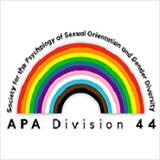Polyamory
APA Division 44 Addresses Polyamory
Cutting-edge research to develop best practices for therapists.
Posted May 16, 2022 Reviewed by Gary Drevitch
Consensual nonmonogamy (CNM) is becoming so much more common that social and legal institutions are beginning to devote more attention to it. Even with increasing recognition, though, people in CNM relationships too often encounter challenges when they seek counseling or therapy, including difficulty finding informed/appropriate care and facing therapeutic bias against CNM. The field of psychology has moved forward, though, with academic research on consensual non-monogamies that has delivered some incredibly interesting results, such as the stunning finding that 20% of people have had an experience with consensual nonmonogamy, and that 5% of people are currently in a CNM relationship.
Despite the widespread practice of CNM, therapeutic training and practice have lagged behind. Training programs for counselors and therapists have traditionally emphasized the damaging impacts of nonmonogamy in the context of infidelity, and few have offered other perspectives on maintaining multiple partners openly. Academics and practitioners have been working to address this gap for decades, moving the therapeutic community at large to take notice of the importance of CNM relationships.
One of the most significant indicators of the growing awareness of CNM relationships is in the work of the American Psychological Association’s (APA) Committee on Consensual NonMonogamy, part of APA’s Division 44.

APA Division 44
In the American Psychological Association, Division 44 is the Society for the Psychology of Sexual Orientation and Gender Diversity. Since its inception as the Society for the Psychological Study of Lesbian and Gay Issues in 1985, Division 44 has remained at the cutting edge of research, publication, and understanding of sex and gender minorities in the United States. Across almost 40 years of supporting research into the vast diversity of gender and sexuality, Division 44’s focus has evolved to include issues relevant to transgender, bisexual, and consensually nonmonogamous people.
[Full disclosure: I am the chair of the (sub) Committee on Legal Issues for Division 44’s Committee on CNM. Beginning in 2018 as the exploratory Task Force on Consensual NonMonogamy, Division 44 officially recognized the Task Force as a Committee in January of 2021. The Committee on CNM has focused on research, publication, and providing psychology professionals information about CNM.]
Academics, psychologists, and researchers involved in the Committee on CNM are publishing their results in a wide range of journals and books. Recent work includes co-sponsoring and editing a special issue of the Archives of Sexual Behavior dedicated to contemporary research on consensual nonmonogamies and an open-access database of publications relevant to CNM. My committee members and former co-chair have collaborated on two articles: "US Family Law Along the Slippery Slope: The limits of a sexual rights strategy for polyamorous parents," published in Sexualities in 2021, and "A Whole Village: Polyamorous Families and the Best Interests of the Child Standard," forthcoming in the Cornell Journal of Law and Social Change.

Perhaps most importantly for counselors and therapists, the Committee on CNM has made strides in providing information to professionals who want to provide culturally competent care for clients in CNM relationships. In 2020, the Committee on CNM successfully advocated for the American Psychological Association and Psychology Today to include consensual nonmonogamies, polyamory, and BDSM as search terms in their lists of therapists. In 2021 Division 44 and the CNM Committee assisted the APA Council of Representatives in updating their Guidelines for Psychological Practice with Sexual Minority Persons to more accurately reflect the prevalence and potential viability of CNM relationships.
Recently the Committee on CNM released a series of four resources for counselors and therapists serving CNM clients. These resources include a pamphlet on providing inclusive care for CNM clients, a brochure for mental health care professionals, suggested language for demographic questions inclusive of CNM, and a fact sheet brimming with useful information.
- Inclusive medical and mental healthcare for CNM pamphlet. This pamphlet defines CNM , describes who has CNM relationships, and details some inclusive therapy practices, recommendations, and resources.
- CNM for mental health professionals brochure. This brochure defines CNM, provides recommendations for appropriately serving CNM clients, and identifies common topics that arise in therapy related to CNM.
- Assessing relationship diversity on demographic forms. This document offers guidelines for best practices in creating intake forms that are inclusive of CNM relationships, including language for asking about relationship status, useful categories for relationship status, and references for further study.
- Fact Sheet. This fact sheet defines key terms, answers frequently asked questions, provides recommendations for researchers, and recommendations for clinicians.
An additional resource is the recording of the May 10, 2022 event that the directors and committee members of the Committee on CNM held in collaboration with the Woodhull Freedom Foundation: "We Can Do Better: Consensual NonMonogamy and Mental Health."
References
Rhoten, K., Sheff, E., & D. Lane, J. (2021). US Family Law Along the Slippery Slope: the limits of a sexual rights strategy for polyamorous parents. Sexualities, 13634607211061485.


